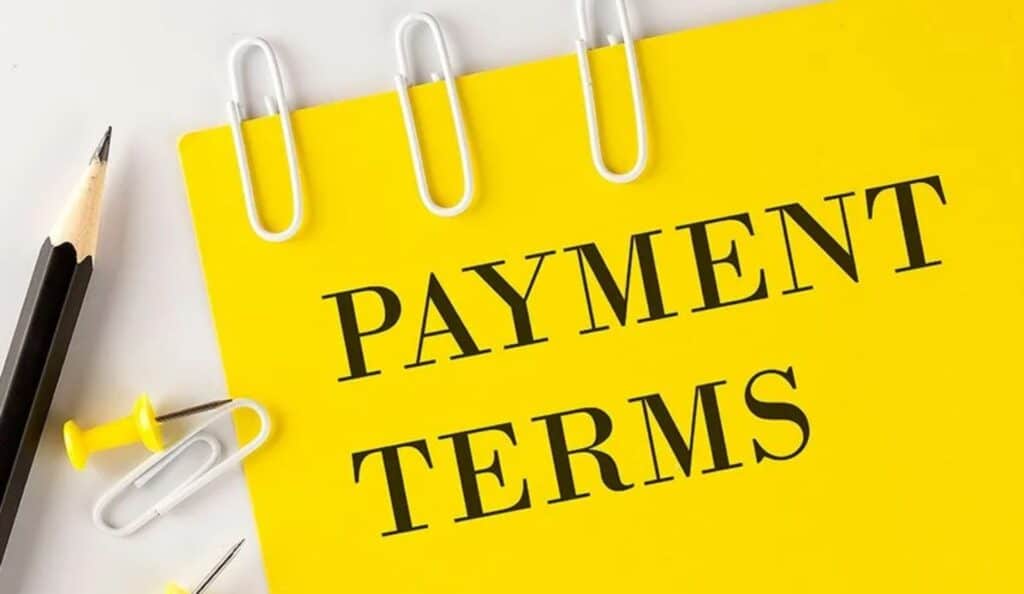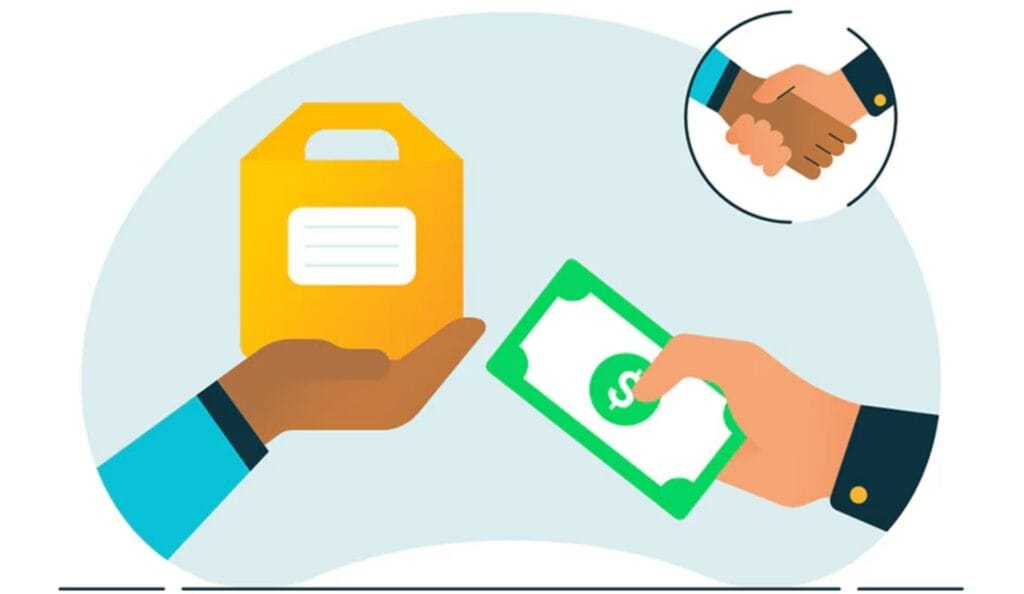
By Harriet Forster March 13, 2025
Payment terms are core to any business deal because they are crucial for cash flow and financial partnering. Before the time to invoice any client arrives, it is very important for a business owner to understand what Net 60 means, the general payment period.
Mastering this financial lingo gives you a grip on your business operations, cash management, and legal standing. If you have worked in accounts payable or receivable, it is likely that you already know what net 60 means.,
What is Net 60 Payment Term?

Net 60 payment terms are common for businesses, giving the buyer 60 days from the invoice date to pay the whole amount. The term “net D” describes a type of payment system, so both parties should know when that 60-day clock actually starts running.
A common approach is for the 60 days to begin on the date of the invoice. If the invoice is sent through the mail, other arrangements exist whereby the time frame would begin from the receipt of the invoice by the buyer. Being aware of such details aids in minimizing possible misunderstandings that may trigger late payments and, on the contrary, have a crippling effect in the working relationship.
In simple words, net 60 means 60 days to pay the full amount on the invoice. If you don’t pay on time, it typically means you will incur late fees in addition to the original balance. Some vendors may allow for a grace period before charging those penalties, but do not count on that. When net 60 shows up on your invoice, make sure to clear the balance within 60 days starting when you actually got the invoice. Normally, vendors provide goods or services upfront and expect timely payment according to the net 60 terms.
How Does Net 60 Payments Term Work?

Net 60 payment terms allow vendors to bill customers for the goods or services after delivery. The invoice should clearly state “net 60” before it’s sent to the buyer so that the vendor can monitor payment and thus properly manage its finances. The buyer has 60 days from the day they receive the goods to settle the account with the vendor. If the payment isn’t made by this time, the vendor may impose fines or other penalties for late payment.
Net 60 allows buyers to sell the goods and to pay for them only after gaining profit from them. Accounts payable must be updated and dues cleared quite early to avoid any penalties. This provision proves to be of significance to both the vendor as well as the business owner, making them concentrate on their daily operations without worrying about payments constantly.
The start of the 60-day payment period shall begin when the buyer acknowledges receipt of the invoice, irrespective of when it was delivered. For the business, any debts will be booked as an account receivable on the balance sheet.
When Does it Start?
Business owners are free to develop their own payment terms. However, it is essential to make them known to the people who receive the invoices. For example, a “net 60” could mean the invoice must be paid 60 days after the date of sale, delivery, when it is sent, or when it is received. Confusion over payment terms can cause payments to be delayed; therefore, one needs to be on the same page and ensure clarity and correctness concerning the set terms.
Importance of Net 60 Payments
Payment terms are Net 60 payment terms, which are very meaningful for all types of business. Giving the buyers enough time to make money before paying their invoices, they further strengthen vendor-and-client relationships. There are many other advantages to having net 60 payment policies.
Opportunities For Business
Providing net 60 payment terms on invoices can open the door to new business opportunities by drawing in even more customers. A flexible payment option that goes by the name of net 60 creates additional value for the business within payment terms. Thus, this, in turn, may enhance professional networking for one’s company and create even more growth opportunities.
Credit Score Maintenance
Offering customers extended payment terms can improve a business credit score significantly. It helps create an excellent credit profile. The same also ensures easier sustenance of that credit profile, which enhances the company into an attractive partner to other businesses. Well, this pulled-up credit score will surely add some visibility and recognition to your brand.
Account Receivable Maintenance
Adding “Net 60” payment terms to invoices can avoid confusion and explicitly state the due date to customers. With your accountant knowing the payment timeline, they can easily handle accounts receivable. This provides them with sufficient time to properly prepare the company’s financial plan.
Types of Net 60 Payment Terms

Under standard Net 60 terms, customers are charged the total amount due within 60 days of the invoice date. They can also receive a 2% deduction if they take care of the bill within 10 days. If they forgo the discount, they still owe the full payment by the 60-day deadline.
The discount rate is determined by the vendors, typically 1-2%. There may also be additional charges for late payments. Some business credit cards offer net 60 accounts with no interest during the grace period, provided statements are paid on time.
Net 60 Vendors
Wholesale markets offer retailers net 60 terms. Abound and Faire offer net 60 payment terms to retailers, too. Abound has free returns on thousands of items, as well. Faire, an online wholesaler, offers qualified retailers net 60 payment terms. Retailers need to prepay with 60 days from ship or invoice date. First, qualified retailers register with Faire and are approved for an initial credit limit which can be increased in the future. Faire verifies applicants’ funds, business data, and sales history when establishing and raising credit limits.
Is Net 60 Right for Business?
Wholesalers often provide net 60 payment terms to bulk-purchasing businesses, as customers might require time to sell before paying for orders. Businesses selling expensive products or services can also offer these terms.
Net 60 payment can be used to establish business credit and increase inventory without exhausting working capital. Businesses must, however, carefully evaluate whether these terms suit their particular operational requirements, whether they are the payee or payer.
How Net 60 Payment Term Helps in Business Credit

Building strong business credit is important, particularly when working with suppliers who provide long payment terms. Accounting software companies offer automated tracking programs to assist with timely payments.
Branded business credit cards offered by many big-box retailers provide access to lines of credit, including Home Depot, Lowe’s, Sam’s Club, Amazon Business Credit Line (net 55), and Citi’s Costco Anywhere Visa Business Card. These business charge cards can have an annual percentage rate (APR) imposed on unpaid balances that are not paid within the due date, an annual fee, and purchase rewards. Payment terms can be as short as net 30 days, or as long as 60 days. Credit card issuers such as American Express also have several specialized business charge card options for qualified customers.
Payment Terms for Net 60
Net 60 means businesses have 60 days to pay their bills. This can be useful for cash flow, particularly for companies with long sales cycles or future revenue. But it’s a delicate balance as the longer payment period may seem like an advantage, vendors may instead conduct stricter credit checks or ask to pay more. It’s like net 30 terms, but you’ll want to think through the advantages and disadvantages for monthly payments, payment methods, and cash flow management.
Registering With Business Credit Bureaus Helps Companies
It is compulsory for new businesses to register with the big credit agencies. They provide information such as their tax ID, date of incorporation, phone, address, website, and legal structure. The agencies later assign a DUN’S number, which is a Dun & Bradstreet business identifier, to the entity. This DUNS number allows vendors to access the business’s credit report/databanks and payment history. You often require a DUNS number when applying for credit.
Approval of Business Trade Credit

The suppliers’ credit department qualifies new clients, granting or refusing credit accounts and establishing credit lines after screening their business credit reports. Vendors use the company’s name, address, DUNS number, or similar identifiers to access this information. Business credit reporting agencies evaluate factors like company strength, time in business, and payment history, then issue scores and ratings.
For small businesses, suppliers might demand personal guarantees to extend trade credit accounts or credit cards secured by business lines of credit. Startups initially must establish their business credit before they can obtain trade credit from more suppliers.
Utilizing Business Credit Bureaus by Vendors
Vendors use a company’s business credit reports, risk management products, and references from suppliers to approve credit accounts and establish credit limits. Business credit reports examine a company’s payment history with a vendor, business lines of credit, and loans, according to the credit reporting agencies.
There are vendors that will do business only with customers who have a strong credit history, positive business credit scores, and are several years in business. Credit may be extended only after a small business owner provides a personal guarantee for payment of outstanding balances. In cases where a company cannot obtain credit, or does not wish to provide a personal guarantee, they may pay in advance, by credit card or other means.
Pros and Cons of Net 60 Term Payment Term
Advantages and Pros of Net 60 Payment Term
Net 60 payment terms can be an incredible tool for businesses since they permit companies to serve smaller clients who may not have the upfront funds available or need to create cash flow before paying.
These flexible terms can greatly increase sales while helping develop a credit profile for businesses with enough capital backing them up.
Moreover, the 60-day window gives buyers ample time to work with their finances and check the invoices before payment is executed. Besides, this payment flexibility builds trust between the buyer and vendor. Buyers are more likely to maintain long-term collaborations with vendors, and the extra time reduces the risk of disputes, as they can contact the vendor and resolve any issues without the pressure of immediate payment.
In general, net 60 conditions favor the buyer and the seller alike, thereby helping with sales as well as building stronger relationships in business.
Challenges and Cons of Net 60 Payment Term
Net 60 payment terms have many advantages, but the main disadvantage is that it can take a long time to receive payments.
This delays funds and makes it easy for clients to forget about or skip payments. The task of following up on missed payments can be tedious yet resource-consuming. To maximize the good they can reap from the arrangement, businesses have to weigh both sides against each other, thus determining long waiting times impacting on cash flow and disallowance of tracking payments continuously.
Some buyers would not be able to pay after 60 days, and hence push for follow-ups. Cash flow will be highly affected by Net 60 for smaller businesses. Other than monitoring account receivables continuously, invoicing net 60 payments entails updating the sheet each time an amount is received
Benefits Of Net 60 Business Accounts
- Net 60 accounts, in summary, provide significant advantages over business credit cards, such as allowing you to pay invoices 60 days later, which helps you manage cash flow. This extra flexibility is revolutionary for companies, enabling them to manage their finances without the pressure of a fast repayment.
- Following Net 60, will boost your business credit score. Like a line of credit, it helps strengthen relationships with suppliers, which can lead to eventually better terms. This is due in part to many Net 60 vendors submitting payment history to business credit bureaus.
- Strategic payments timing can result in better terms and pricing over the long haul, promoting your business’ growth and innovation. Net 60 accounts are a central nervous system for modern businesses in this sense.
Conclusion
Payment terms of net 60 can be quite helpful for businesses. Such terms provide buyers with flexibility while allowing sellers to draw more customers. But they also mean later payments and the need to keep a close eye on receivables.
When used thoughtfully and clearly communicated, Net 60 can help you to support growth, improve financial planning, and build business credit. Whether you’re a buyer or seller, knowing about Net 60 can help you make smarter money decisions to achieve long-term success.]